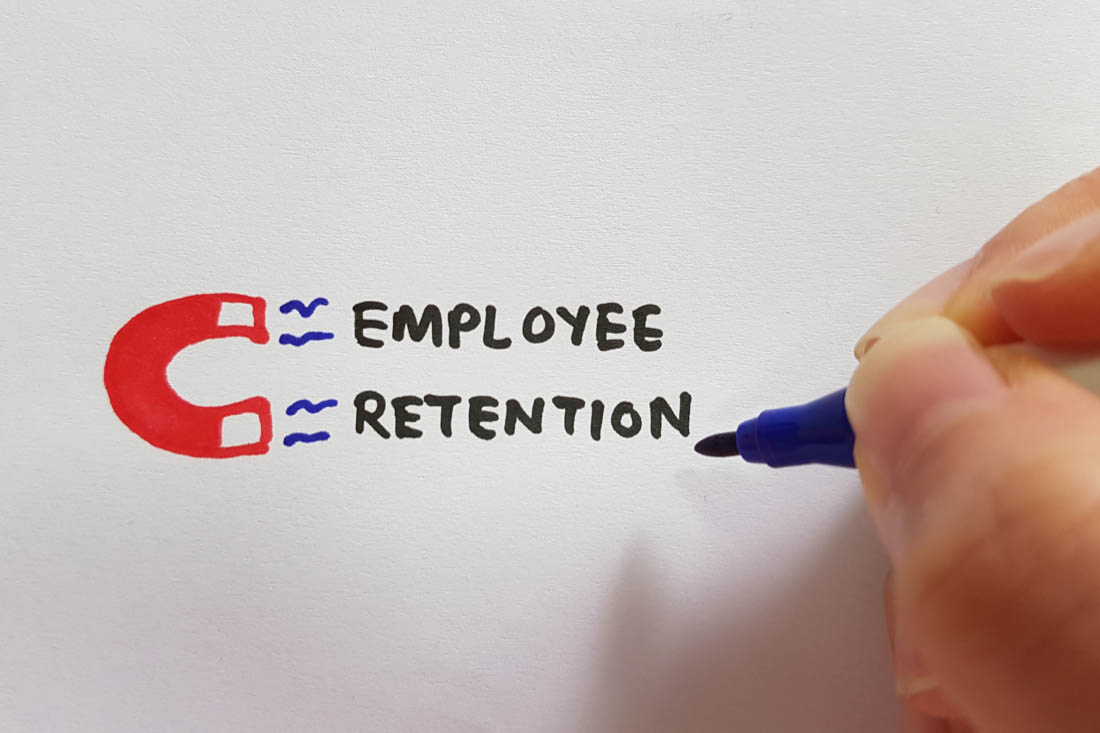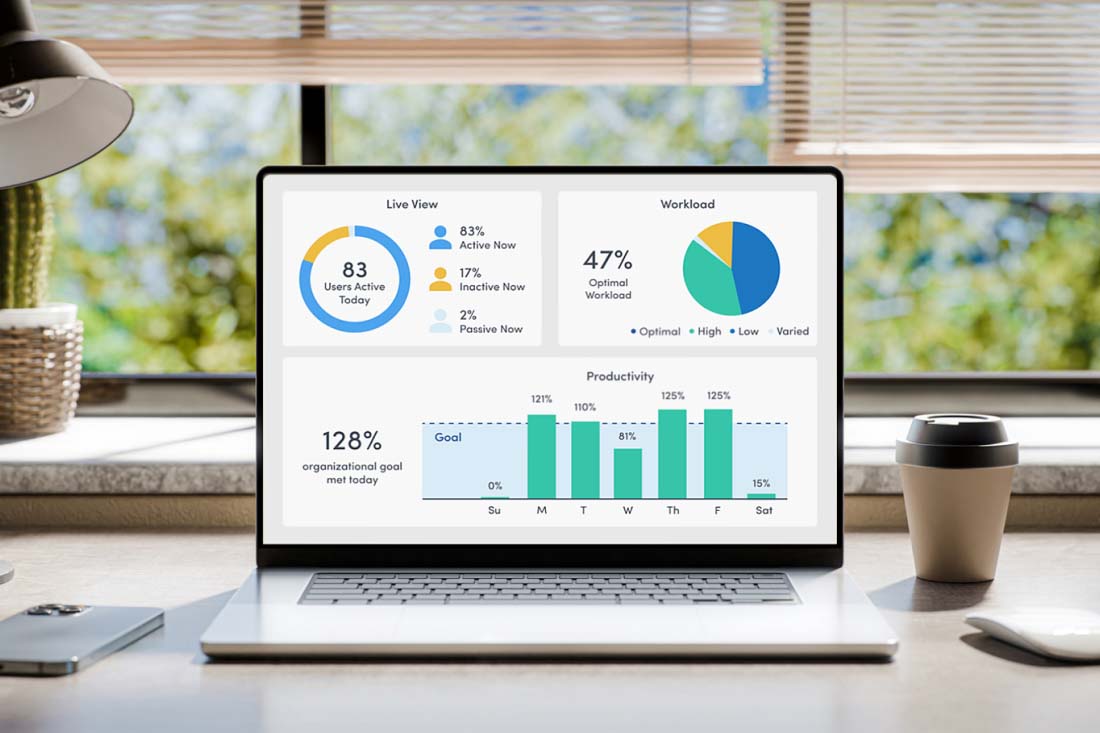Employee attrition is one of the most important metrics for every company to measure. Your attrition rate says a lot about your company — what kind of culture you have, how loyal your people are and so much more.
It’s normal for employees to come and go, and people leave jobs for all kinds of reasons. But when a lot of people leave, something’s clearly wrong. Evaluating your attrition rate will clue you into what’s happening so you can fix it. Better yet, by tracking this metric early and often you’ll stay ahead of problems before they take hold.
What is attrition rate?
Attrition rate is a metric that indicates the pace at which employees leave the company voluntarily or involuntarily in a given period and are not replaced. It’s expressed as a percentage and serves as a vital indicator of workforce stability. It’s sometimes used interchangeably with turnover, but the difference is that turnover refers to employees who leave and are replaced while attrition indicates positions that go unfilled or are eliminated. Measuring your attrition rate reveals workplace dynamics that can otherwise fly under the radar, and helps leadership evaluate if retention efforts are working.
Return-to-office mandates are also creating contention in many workplaces. While an estimated 47% of companies want people in the office at least two or three days a week, half of employees want to come in only once and 34% prefer full-time remote work. If employees demand remote work and your company isn’t providing options, it can lead to mass turnover and restructurings that increase the attrition rate.
Types of attrition
Attrition happens for different reasons, and each has its own set of implications. The four primary types include:
Voluntary attrition
When an employee decides to resign or retire, it’s called voluntary attrition. A spike in voluntary attrition may signify underlying problems, such as a lack of career advancement opportunities, poor management, a toxic culture and burnout. The same is true for positions that remain vacant for extended periods, as job candidates are less likely to accept offers at a company when they see many others quitting.
Involuntary attrition
When a business ends employment, it’s called involuntary attrition. Reorganizations, mergers and acquisitions, downsizing and seasonal staffing are common reasons for involuntary attrition. Often, it happens when someone leaves and the position is eliminated.
External attrition
When someone leaves a company to work at another organization, it’s considered external attrition. Better benefits, higher pay and shorter commutes all influence decisions to accept a position elsewhere.
Internal attrition
When someone accepts a new position within the same company, they’re engaging in internal attrition. While promotions are the most common reason for internal attrition, switching to a new department might indicate issues within a certain team.
Attrition rate factors that lead to employee turnover
Your attrition rate can be influenced by several factors, but the most common reasons for attrition are:
- Inadequate compensation
- Lack of recognition
- High workload
- Desire for a flexible work arrangement
- Insufficient development opportunities
- Toxic work culture
If you see an increase in employee attrition, it may be the result of one or more of these factors. Some of these factors also contribute to a high attrition rate because they reflect issues with filling a position, such as a toxic culture or low salary that can discourage people for applying to open roles.
Why is attrition rate important?
Unlike your employee turnover rate, which is impacted when an employee leaves and is immediately replaced by someone new, your attrition rate incorporates permanent employee losses. It includes eliminated positions or unfilled ones for extended periods. While it’s possible to have high turnover rates and still see company growth, a consistently high attrition rate means the business is shrinking.
An unusually high employee attrition rate is also a reason for human resources to evaluate company culture and the employee experience. Losing top talent, especially if you struggle to find replacements, means you won’t operate as efficiently. The longer a position is vacant, the bigger the impact on productivity, morale and engagement. And since it costs up to two times a person’s salary to hire their replacement, high attrition rates are expensive.
How to calculate attrition rate
To calculate attrition rate, follow these five steps:
- When calculating your attrition rate, start first by deciding what time period you’d like to evaluate. Attrition rate calculations are usually done monthly, quarterly or annually.
- Identify how many employees you started with.
- Determine how many employees you ended with by subtracting the number of employees who left and adding the number who were hired. To calculate voluntary and involuntary attrition rates specifically, utilize the respective numbers of employees who voluntarily and involuntarily left instead of grouping them together.
- Add your starting and ending numbers. Then divide by two to calculate your average number of employees during the period.
- Divide your employee average by the number of employees who left. Then multiply by 100.
Accurately calculating your attrition rate is essential to understanding the extent of problems. For the most meaningful insights we recommend regularly measuring your overall attrition rate as well as voluntary and involuntary rates.
Attrition rate formula
The easiest way to tackle the above steps is with a simple formula. To calculate your attrition rate, divide the number of employees who left your company during a specific period by the average number of employees in that same period. Then multiply that number by 100 to calculate your attrition rate percentage:
Attrition rate = (Number of employees who left / Average number of employees) x 100.
For example, let’s say you want to understand employee attrition within a team that appears to be struggling. The team started the quarter with 25 employees. By the end of the quarter, it was down to 21. Seven employees left but only three were hired. Calculating attrition would look like this:
25 – 7 + 3 = 21
(The number you started with) – (The number that left) + (The number hired) = (The number you ended with)
(25 + 21) / 2 = 23
(Starting number + ending number) / 2 = (Average number of employees)
(7 / 23) * 100 = 30%
(The number who left)/(employee average)/ *100 = (Team attrition rate)
In the example above, the team attrition rate would be 30%. By comparison, consider a scenario where 45 people left the overall 500-employee organization during the same period — and 28 new hires came on board. In this company-wide example:
500 – 45 + 28 = 483
(500 + 483) / 2 = 492
(45/492)*100 = 9%
The company’s overall attrition rate is only 9%, which is much lower than the 30% attrition rate from the team in the previous example. The noticeable difference between team-level attrition and the company’s overall attrition rate tells leadership there’s a problem to investigate.
This data-driven approach empowers you to develop targeted strategies for employee retention and talent management. By analyzing attrition rates for different departments, job levels and demographics, you’ll identify patterns and potential areas of concern. For example, a high attrition rate within a single segment — such as ethnic minorities, age groups or people with disabilities — is a sign you need to address issues with diversity.
What causes high attrition rates?
Resignations and reorganizations are a normal part of workforce ebbs and flows. But how do you account for events like the Great Resignation, when over 47 million Americans made an unprecedented mass exit from the workforce? Why would people leave a seemingly great workplace without warning? And what does a revolving door say about your company?
High attrition rates are usually a sign of underlying problems. Some of the most common causes include:
Stress and burnout
A stressful work environment is a common cause of high attrition rates. One recent report reveals six in ten workers have recently left their jobs or are considering quitting, and 54% cited poor work-life balance and too much stress as the reason. This usually happens when workloads aren’t balanced fairly, causing high performers to carry too much of the load.
A lack of remote work options
Return-to-office mandates are also creating contention in many workplaces. While an estimated 47% of companies want people in the office at least two or three days a week, half of employees want to come in only once and 34% prefer full-time remote work.
Limited career advancement opportunities
When someone feels stuck at a job with no room to grow, they’re more likely to leave and negatively affect your attrition rate. Companies that prioritize growth and development experience a 34% higher retention rate than those that don’t. In fact, nine in ten employees say they’d stay at a company longer if it simply invested in helping them learn new skills.
Poor management
People don’t always leave companies. Often, employees quit because of a bad boss. And this problem has persisted for years. A 2015 Gallup study found 50% of employees left jobs “to get away from their manager to improve their overall life.” Years after employee engagement metrics and workforce analytics became common, 57% of people still cite poor leadership as the reason for resignations.
Noncompetitive pay
Salary has a huge impact on attrition. In the latest survey from Monster, “insufficient wages” is the primary reason 95% of employees look for (or plan to look for) new jobs. Cost of living adjustments, performance-based rewards and bonuses all impact peoples’ decisions to stay or leave. And once they’re gone, the cost of recruiting, hiring, training and onboarding adds up fast — not to mention the additional work your current employees will take on while you search for a replacement.
6 strategies to reduce attrition rate
Addressing high attrition rates requires a proactive approach. Use these strategies to hold on to valuable team members long term.
1. Enhance the employee experience
A disengaged workforce is more likely to experience higher attrition rates. By investing in the employee experience and initiatives such as career development programs, mentorship opportunities and regular feedback channels, you’ll foster a sense of loyalty and commitment.
2. Prioritize employee retention
Retention policies play a vital role in preventing attrition. Consider adopting strategies such as competitive compensation packages, flexible work arrangements and a supportive work culture that values employee well-being. Regular check-ins and career growth opportunities also demonstrate a commitment to helping employees thrive.
3. Monitor performance and productivity
Regularly monitoring workforce metrics ensures accurate, unbiased insights for lowering attrition. For example, assess location-based insights to see if your hybrid or remote work policy is positively influencing productivity. Or assess workloads to help struggling employees. Evaluating a full range of performance and productivity reports is one of the best ways to find and fix issues before they lead to high attrition rates.
4. Leave the door open
These days, it’s rare for someone to stay at the same company for their entire career — and many who resign will later be open to coming back. Conduct positive exit interviews to ensure people leave on good terms. Creating a positive company culture, even during resignations, ensures past employees remain loyal ambassadors of your company.
Beyond the common categories, two additional types of attrition offer important insight for workforce planning. Demographic-specific attrition reveals patterns within certain groups like younger employees, women or underrepresented teams and can indicate gaps in engagement, inclusion or equity. Retirement attrition is typically expected but can still create challenges if organizations aren’t prepared to manage knowledge transfer or fill leadership roles. Both require a strategic approach to maintain continuity and support long-term workforce stability.
5. Promote cooperative skill building across teams
One way in which organizations are reducing attrition rate is by embracing cooperative skill building to enhance employee growth and reduce turnover. By fostering peer-to-peer learning and creating cross-functional teams, employees can share knowledge and develop diverse skills together. Personalized learning paths aligned with individual career goals further boost engagement and satisfaction. Companies that prioritize these collaborative approaches see significantly higher employee fulfillment and retention, demonstrating that investing in personal development creates a more committed and motivated workforce ready to tackle future challenges.
6. Use data to personalize the employee journey
A one-size-fits-all approach won’t cut it in today’s workplace. Use workforce analytics to understand what motivates each employee, how they work best and where they’re most at risk of disengagement. Whether it’s adjusting schedules to align with peak productivity or tailoring development plans based on real behavior data, personalization shows employees that leadership is invested in their success — which increases both satisfaction and retention.
Attrition rate management made easy with ActivTrak
Ready to take control of your organization’s attrition rate and propel your teams toward greater success? ActivTrak keeps your finger on the pulse of your most important metrics, from employee engagement to workforce management to capacity planning. You’ll be alerted to early signs of burnout, disengagement and other issues long before they impact turnover and attrition.
Request a demo for a behind-the-scenes look at our most popular dashboards, and to learn how we help companies like yours track and reduce attrition rate.





